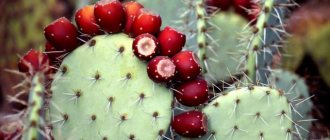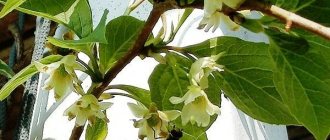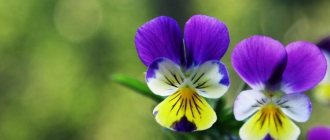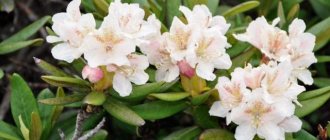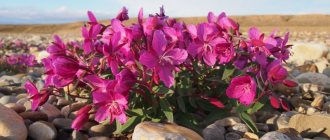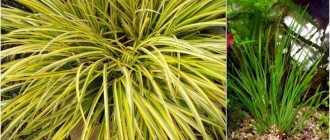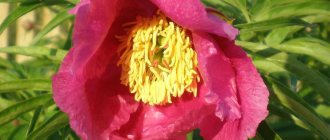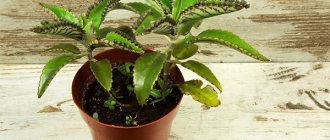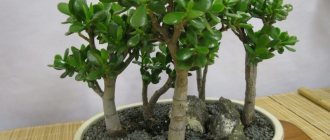Field bindweed is a rather pretty wild plant that blooms with pink and white bells. Whatever names people give to this plant. Most often, gardeners call it birch. At the same time, no one is happy if this weed has chosen his plot. Gramophone grass, felt grass, birch bark, dodder - all these are names of the same plant.
general description
This plant is distinguished by thin, numerous, spiral and climbing stems. It has a branching and tap root and oblong leaves, which are located on long petioles.
Field bindweed begins to bloom in late spring and continues almost until the end of autumn. The inflorescence opens in the morning when the weather is clear. If you see that the heads are tightly closed in the morning, it means that it will start raining soon. The plant bears fruits, which are a round capsule and contain poisonous seeds. Despite this, the fruits contain many useful substances.
What it looks like and where it grows
Bindweed is a representative of the genus Lianovidae. More than 100 plant varieties have been studied. The most common species is field bindweed.
The plant belongs to the Bindweed family
The herbaceous perennial is widespread in the following areas:
- Russia (European part);
- Caucasus;
- Far East;
- Central Asia;
- Siberia.
Field bindweed is a weed that has many names:
- bell;
- gourd;
- birch;
- birch bark;
- bitterness;
- toffee;
- dodder and ruler;
- almond or felt grass;
- gramophone player.
The plant is distinguished by a creeping rhizome and curly, long stems reaching 3 m. A dense rosette of bindweed is formed from one of the root necks. The branching root goes into the soil to a fairly impressive depth. Green birch leaves can reach up to 6 cm in length. Their shape usually resembles a heart.
The bindweed flower has medicinal properties. It is distinguished by a pinkish tint and the presence of five dark longitudinal stripes. Flowering of bindweed is observed during May-October. The flowers look like funnel-shaped gramophones. They are located on rather long peduncles and are characterized by a pleasant, but not pronounced aroma.
Birch fruits ripen by early autumn. They are represented by a small box with four dark seeds.
Bindweed is a pest that absorbs nutrients and moisture from the soil, preventing the growth of:
- corn;
- oats;
- barley;
- wheat.
The weed can be found in orchards, fields, uncultivated agricultural land, as well as along roadsides and railways. Bindweed is unpretentious to its growing conditions. However, birch was also recognized as a medicinal crop. In particular, infusions and decoctions of almond grass are used in the following cases:
- liver diseases;
- swelling;
- lichen;
- asthma.
For the gardener
Field bindweed is a dangerous and harmful perennial weed for all summer residents. Only in photographs does it look like a cute and harmless plant. It grows successfully on almost any soil. There are about 190 species of these weeds, but their differences are minor. Overall they are quite similar. Wrapping around the stem, field bindweed suppresses and shades all useful plants, including cereals.
Controlling this plant is very difficult. Thin, thread-like creeping roots penetrate deep into the ground. And the stems branch and creep, intertwining with useful plants, which complicates the fight against weeds. But let's look at this plant from the other side. Field bindweed is used for medicinal purposes, which means you need to consider its properties. Maybe someone will take a fresh look at the annoying plant and prepare it for future use for the winter.
Medicinal properties and harm
Traditional medicine has long used the medicinal properties of marigolds for the following diseases:
- neurosis, insomnia;
- gastritis, colitis;
- dermatitis, dermatophytosis;
- burns, non-healing wounds, cuts;
- heart failure;
- uterine bleeding;
- constipation; flatulence; anthelmintics;
- Parkinson's disease;
- hypertension.
Loquat is not used in official medicine and is not included in the register of medicinal plants. The plant contains toxic substances, so internal use requires caution.
Contraindications are pregnancy, breastfeeding, hemorrhoids, low blood pressure. An overdose is fraught with vomiting, cerebral vasospasm and speech disorders.
The creeping stem of Lusitania is capable of twining around and covering large areas of crops.
Observations of traditional healers
We know about many plants thanks to the observation skills of our ancestors. They lived in harmony with nature, fed and were treated with its gifts. The healing properties of field bindweed have been known since ancient times. It was used to treat asthma, kidney and lung diseases. Traditional medicine was based on the positive results obtained.
The first information about the properties of bindweed came to us from the Middle Ages. Arab doctors quite widely used this plant as an astringent, blood vessel cleanser and stomach strengthener. A detailed description of bindweed is found in medieval treatises. Jaundice was treated with bindweed juice, and by adding seeds to the juice, an excellent remedy for fever was obtained. Infusions and decoctions were also used to treat cancer.
But today modern doctors have laboratories that allow them to obtain information about the composition of a particular plant and its effect on the body. It was possible to find out that the field bindweed plant exhibits excellent antispasmodic, anti-inflammatory, and hemostatic properties. It can also act as a local anesthetic. A photo of field bindweed will allow you to recognize it in the garden without any problems.
Field loach: indications for use
For gardeners and gardeners, the loach is a malicious weed that leads to the death of other plants. However, bindweed itself has many beneficial properties. It contains vitamins A, C, E. These vitamins have a beneficial effect on vision, skin, mucous membranes, immunity, blood vessels, and heart.
Traditional healers prepare medicinal infusions, decoctions, and teas based on all parts of the plant.
Medicines based on bindweed have a sedative, antipyretic, diuretic, and laxative effect. The drugs are used internally and externally. Ointments based on bindweed are used to treat dermatitis, wounds and burns.
Indications for the use of bindweed-based drugs:
- Tuberculosis;
- Syphilis;
- Fever;
- Postpartum endometritis;
- Visceroptosis;
- Respiratory diseases.
Seeds, grass, flowers and plant roots are suitable for preparing preparations. A detailed description of the beneficial properties of the plant can be found on the Internet on specialized websites. Before using a plant-based drug, you should definitely consult a specialist.
How to use the plant
Today we are trying to destroy it with the help of modern drugs. And in the old days, our ancestors carefully collected birch trees throughout the season. The description of field bindweed today causes more negativity, because we have to fight this guest in the garden every year.
All parts of the plant have medicinal properties: roots, stems and leaves. It is very rich in various biologically active substances and compounds. All parts of bindweed contain substances such as flavonoids, convolvulin glycoside, vitamins (especially a lot of A, C and E). In addition, the composition contains bitterness and toxic alkaloids. That is why preparations with this plant must be taken carefully, carefully observing the dosage.
You can spend quite a long time looking at the rich composition of this simple-looking weed. The green part of the plant is rich in vitamin E and resinous substances, blood clotting substances, saponins and bitters. The capsule fruits, or rather the seeds of the plant, contain alkaloids and fatty oils. There are many different resins in the flowers. That's not all, we forgot about the root system. Bindweed roots are rich in tannins and various resins. Tinctures and decoctions based on them have a stimulating effect on the peripheral nervous system.
Field bindweed
This herbaceous plant is most often controlled in vegetable gardens or flower beds. However, as practice shows, you can be friends with him. Field bindweed contains dozens of useful elements that help in the fight against diseases:
- liver;
- respiratory tract (bronchitis, asthma);
- circulatory system;
- skin rashes;
- kidneys (relieves swelling).
Moreover, it has antiseptic properties. Crops that grow next to it are less susceptible to mold or mildew. It makes excellent mulch. Such a substrate not only disinfects the soil, but also makes it loose and moist.
Favorable soil for this species is loam or sandy loam (with a high sand content).
Field birch can be either perennial or annual. White or pink small flowers (blue and purple are rare) abundantly cover the creeping stem. In most cases, it has a smooth surface, but sometimes there are specimens with a hairy covering. To a full description of field bindweed, the following must be added:
- the stem reaches only 100-150 cm in length;
- flowering period: from mid-April to the first frost;
- leaves of an elongated triangular shape (like a spear), located on the petioles;
- cone-shaped flowers grow on long stalks singly or in inflorescences (1-3 buds);
- thin bindweed roots reach 3 and even 6 meters in length;
- method of propagation: seed or root (offshoots).
This birch tree serves as a wonderful decoration for the garden. With its help, the housewife will skillfully hide incorrect gaps in the landscape design. An exquisite living carpet in your backyard made from golden weed will create an enchanting ambience.
Dosage forms
As a medicine, bindweed herb is used in the form of decoctions, infusions and powder. They also make medicinal ointments. For their production, grass and roots are most often used. Preparations from bindweed are a broad-spectrum remedy. They have choleretic, laxative and diuretic effects. This is an excellent remedy for lowering blood pressure. The seeds of the plant have a positive effect on intestinal functions and peristalsis.
Beneficial features
Convolvulus contains many valuable components. Thanks to this, the plant allows you to obtain the following effects:
- strengthen intestinal peristalsis;
- increase colon secretion;
- cope with insomnia;
- heal wounds;
- lower blood pressure;
- eliminate spasms and pain;
- normalize temperature;
- prevent tumor growth;
- cure ARVI.
Preparation of medicinal raw materials
Photos and descriptions of field bindweed make it possible to understand exactly what kind of plant we are talking about. It grows not only in gardens, but also along roads, in forest clearings and forest edges. It can be harvested for grass during the entire flowering period. But it is best to dig up the roots in spring and autumn.
Herbaceous stems need to be sorted out and damaged leaves and twigs removed. Cut them into pieces. To dry, the roots need to be sorted out and pre-rinsed. Plant materials are dried under a canopy, on a clean sheet. The resulting raw material has a bitter taste; it can be poured into a glass jar or cotton bag. This way the medicinal plant can last for a long time, maintaining its properties.
Garden bindweed in landscape design
Perennial bindweed is often used in landscape design. It is well suited for hedges, decorative flower beds and voluminous flower figures.
Perennial garden bindweed: photo
It is also planted to shade other crops, or it can be used to divide a plot into parts. They can also be used to decorate various buildings, structures and sheds.
Folk recipes
Before use, do not forget to study the medicinal properties of field bindweed and contraindications. This is a poisonous plant and, despite the fact that the concentration of toxins is low, it is prohibited for use by pregnant and lactating women. In case of individual intolerance to components or allergic reactions, it is also necessary to choose an alternative.
- An ointment based on fresh plant juice and butter is used for pneumonia and otitis media.
- Decoctions work great with all kinds of skin diseases: rashes, lichen, scabies.
- For toothache, make an infusion from the root. To do this, pour a glass of boiling water over a spoonful of crushed root and leave for 20 minutes. You should rinse your mouth with this mixture twice a day.
- To treat chronic bladder diseases, you need to take bindweed, yarrow, lingonberry and bearberry herbs in equal quantities. Mix everything well. Take two tablespoons of the mixture and pour three glasses of boiling water. After two hours, you can strain and drink a glass three times a day.
- It is better to use fresh herbs to treat asthma. You need to take a tablespoon of well-chopped herbs and pour a glass of boiling water. After an hour you can strain. Divide the resulting raw material into 4 parts and drink throughout the day.
Use for diseases
This indestructible weed, which causes a lot of trouble for gardeners, is fraught with many healing powers. It is believed that a fresh plant is more effective than a dried one, but bindweed is poisonous when fresh, which should not be forgotten. Bindweed is used to treat bronchitis, bronchial asthma, other diseases of the lungs and respiratory tract, edema of various origins, bleeding, diseases of the liver and spleen. In summer, this is one of the best remedies for wound healing. A decoction of dried leaves or roots is used externally for rashes, lichen, and pustular skin lesions. It has been established that bindweed has an antitumor effect.
The plant is poisonous.
Any self-medication involving the ingestion of infusions, tinctures, or bindweed powder is unacceptable: it is life-threatening!
Bindweed has hypotensive, antispasmodic, anti-inflammatory, hemostatic, local anesthetic, laxative, diuretic, wound-healing, and irritating mucous membrane properties.
Used for:
- hypertension
- bronchial asthma
- bronchitis
- insomnia
- cold
- liver diseases
- spleen
- lungs
- edema of various origins
- bleeding
A decoction of the whole plant is drunk for inflammation of the upper respiratory tract, a decoction of the flowers is used for fainting. Fresh grass is perhaps the best medicine for healing wounds. The plant and its dried form are unsuitable for medicinal purposes.
It is considered a poisonous plant and is used only externally: for healing wounds (radical remedy) as a lotion from fresh juice or diluted tincture (in a ratio of 1: 10).
Bindweed is not collected as a medicinal plant, since when dried it loses its properties.
For medicinal purposes, use the whole herb or only bindweed flowers. Field bindweed can be collected all summer, cutting off the stems as low as possible, since this weed will fill all available space in gardens and along hedges. The stem with flowers is used fresh or an alcohol tincture of 1:5 is prepared.
In folk medicine, bindweed has long been used in the form of decoctions and infusions of leaves and flowers for women's diseases, especially after childbirth, for visceptosis, metrorrhagia, leucorrhoea, for chronic bronchitis, ascites, tracheitis, acute respiratory infections; externally – for the treatment of dermatitis, dermatomycosis, abscesses, ulcers.
In Central Asia, the juice of the plant is used as a choleretic, for headaches, diseases of the ear, spleen, lungs, liver, for bronchial asthma, in gynecology, as an antitumor, for arthritis, as a detoxifying agent for the bites of poisonous snakes and insects, for the treatment of long-term non-healing wounds and ulcers, as a cosmetic for removing freckles and age spots; in the form of powders - for weeping wounds and ulcers.
In Bulgaria, bindweed is included in preparations used for hepatitis, cholecystitis, cholelithiasis, liver cirrhosis, as a diuretic.
In the experiment, aqueous and alcoholic extracts of the aerial parts of the plant have anticonvulsant, antispasmodic, hypotensive, myotropic, and diuretic effects; increase the speed of coronary blood flow, normalize blood pressure, accelerate blood clotting, have antitumor activity, inhibit the growth of sarcoma, exhibit antibiotic, protolytic, acoricidal activity.
The juice of a flowering plant has an anesthetic, bactericidal, hemostatic, anti-inflammatory, and wound-healing effect.
In Tibetan medicine, the aerial part of the plant, leaves and flowers are used for atherosclerosis, tuberculosis, syphilis, as a sedative for neuroses, and fever.
In Mongolian and Indian medicine, decoctions of bindweed roots are made for eye diseases, as a laxative, for enuresis, dermatitis, and astralgia.
In Korea, a decoction of the seeds is used as a diuretic, anthelmintic, laxative, for edema of various etiologies, nephritis, cough, and for heart and kidney failure.
Among the peoples of Western Europe, bindweed roots are used for gastritis, enterocolitis, stomach diseases, toothache, fainting, and flu.
Medicinal raw materials are stems and roots, less often flowers and seeds. Collected during flowering, most often during weeding. Dry under a canopy or in a dryer at a temperature of 45 ° C. The finished raw material has a characteristic bitter taste. Shelf life 1 year.
Contraindications and side effects
Not only expectant and nursing mothers should be careful. It is necessary to consult a doctor and strictly adhere to the recommended dosage. If you exceed it, vomiting and diarrhea, severe pain in the abdominal area may develop. The chemical elements contained in bindweed can only be excreted by the kidneys, which has an extremely negative effect on hard-working organs and leads to their disease.
The seeds are the most toxic, they affect the nerves, and those located under the tongue are most often affected. Because of this, speech problems may develop. And of course, the expectant mother should not consider this plant as a medicine. Its use leads to miscarriages.
Easily recognizable appearance of ancient curly steeplejacks
Garden or cultivated bindweeds are perennial or annual, but most often grown because of their heat-loving nature as annual plants with long and flexible shoots from 50 cm to several meters. Creeping or climbing shoots create a dense canopy, densely dotted with simple and large, alternately arranged, whole heart- or arrow-shaped leaves, less often lobed or serrated.
The color of the greenery is quite rich, creating a beautiful and fresh-looking carpet or screen. The flowers bloom on short peduncles singly or in several pieces from the axils of the leaves, open in the morning and in good weather and close in cloudy and dark times of the day. The wide funnels of the corolla are very pretty, the colors range from snow-white to the most delicate pink, lilac, blue, most often the outer side is brighter. Individual bindweeds have striking varieties.
Growing bindweed from seeds
Bindweed reproduces exclusively by seed. In order for the plant to grow faster and bloom better, it is best to grow its seedlings rather than plant the seeds directly in open ground. It is necessary to plant bindweed seeds for seedlings in March. Before planting, the seeds must be kept in water for 24 hours. Then plant in separate pots. It is better to use special soil as soil for planting seedlings of flowering plants. The seeds need to be deepened a little and sprinkled with soil on top. There is no need to plant bindweed in common containers, since the seedlings of this plant are very painful to transplant.
Pots with planted seeds should be placed in a room where the temperature is from 18 to 20 degrees. Regular watering is also necessary. After about 2 weeks, the first shoots will appear. In addition to watering, bindweed seedlings need mineral fertilizers, which must be applied once every 2 weeks.
Lighting and soil needed by bindweed
In terms of their requirements for growing conditions, bindweeds are similar to most garden annual vines. These are not capricious plants that are content with little, which will pleasantly surprise any gardener who plants them. The only condition necessary for success in growing all bindweeds is providing them with a sunny location or at least diffuse bright lighting and non-acidic soil.
Bindweeds bloom most spectacularly in open, sunny areas with high-quality loams, but in general they are not too demanding on soil nutrition and can take root in almost any garden soil.
Planting morning glory is a simple process. This plant requires maintaining a distance to neighboring plants of 20-25 cm, and for bindweeds intended to fill the soil - 40-60 cm. Bindweeds are also not planted too thickly in ampels and pots: even one plant will create a spectacular cascade.
Varieties
Varieties have been bred with spectacular and larger, up to 5 cm, crimson and white flowers, which are often sold in mixtures with blue ones. Some of the varieties:
- Blue Enchantment - up to 35 cm tall, with tricolor flowers and an indigo blue zone.
- Crimson Monarch - with crimson flowers.
- Blue Ensign - up to 30-45 cm tall, with large, up to 5 cm in diameter, flowers of traditional blue-white-yellow color. The edges of the corolla are bright blue.
- Royal Ensign - up to 40 cm tall, with unusually beautiful deep blue flowers, with a white “star” and a yellow center;
- White Ensign - 30-45 cm tall, with white flowers up to 5 cm, with a golden yellow neck.
- Rose Ensign is a four-color variety: the base color is pink, then there are flecks of crimson that surround a white center with jagged outlines and a yellow eye.
